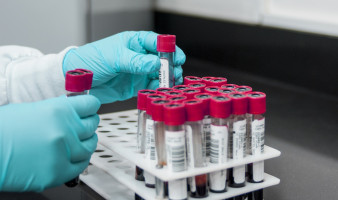
The histone deacetylase (HDAC) inhibitor vorinostat (Zolinza) in combination with the mTOR inhibitor sirolimus (Rapamune) or everolimus (Afinitor) showed clinical efficacy in patients with relapsed/refractory Hodgkin lymphoma, according to results from a phase I clinical trial published in Clinical Cancer Research, a journal of the American Association for Cancer Research.
"While the majority of patients with Hodgkin lymphoma have favourable outcomes with standard treatment, approximately 20-30 percent of patients with advanced disease develop refractory disease after primary treatment," said Janku. "These patients typically have poor outcomes with five-year survival rates as low as 30 percent."
Histone deacetylases (HDACs) are cellular proteins that regulate gene expression.
Aberrant HDAC expression is associated with cancer, and HDAC inhibitors have been approved for the treatment of certain blood cancers.
Resistance to HDAC inhibition in Hodgkin lymphoma has been suggested to develop through activation of mTOR signalling, which regulates cellular proliferation and cell death, explained Janku.
Thus, combining HDAC inhibition with an mTOR inhibitor could help prevent resistance and improve responses to treatment, he noted.
Prior preclinical research demonstrated that combined inhibition of HDACs and mTOR signalling had antitumour effects against Hodgkin lymphoma.
Furthermore, a patient with relapsed/refractory Hodgkin lymphoma who received treatment with vorinostat and sirolimus as part of a phase I clinical trial had a partial response to the treatment.
In this study, Janku and colleagues examined the clinical efficacy of vorinostat in combination with either sirolimus or everolimus in a larger cohort of patients with heavily pretreated relapsed/refractory Hodgkin lymphoma who had received a median of five prior therapies.
The cohort included 40 adult patients; of these patients, 22 received the vorinostat and sirolimus combination, and 18 received the vorinostat and everolimus combination.
The objective response rate for patients in the vorinostat and sirolimus arm was 55 percent, with six complete responses and six partial responses.
After a median follow-up of 43.3 months, the median progression-free survival was 5.3 months.
Median overall survival had not been reached at the time of analysis.
The objective response rate for patients in the vorinostat and everolimus arm was 33 percent, with two complete responses and four partial responses.
After a median follow-up of 21 months, the median progression-free survival was 4.8 months.
Median overall survival had not been reached at the time of analysis.
All 40 patients were evaluated for adverse events.
The most common grade 3 or 4 treatment-related adverse events in both treatment groups were thrombocytopenia, neutropenia, and anaemia.
There were no treatment-related deaths.
"In our study, we observed a relatively high objective response rate in a patient population that would otherwise have poor outcomes," said Janku. "Based on our results, I believe further investigation is warranted for these combination treatments."
Janku added that his future research will examine the efficacy of these combinations with immune checkpoint inhibition.
"There is evidence that both mTOR and HDAC inhibitors affect the tumour microenvironment, so there may be a benefit to combining these inhibitors with immunotherapy," he noted.
A limitation of the study is that it was conducted prior to the approval of immune checkpoint inhibitors for relapsed/refractory Hodgkin lymphoma and therefore does not account for prior treatment with immune checkpoint inhibitors.
An additional limitation is that the trial was conducted at a single institution.
We are an independent charity and are not backed by a large company or society. We raise every penny ourselves to improve the standards of cancer care through education. You can help us continue our work to address inequalities in cancer care by making a donation.
Any donation, however small, contributes directly towards the costs of creating and sharing free oncology education.
Together we can get better outcomes for patients by tackling global inequalities in access to the results of cancer research.
Thank you for your support.